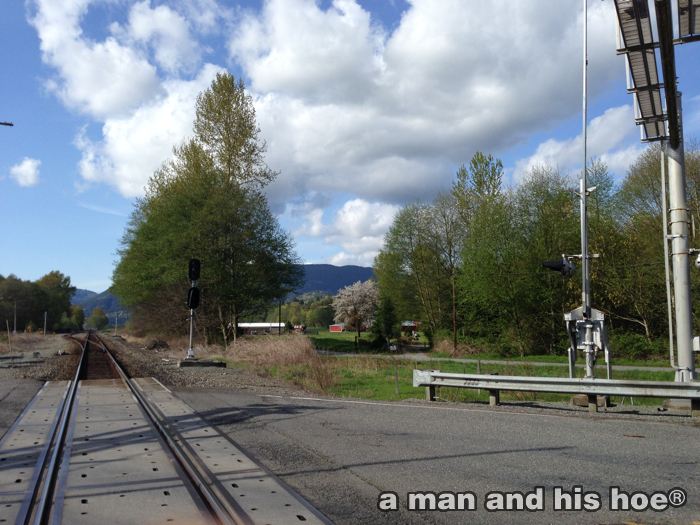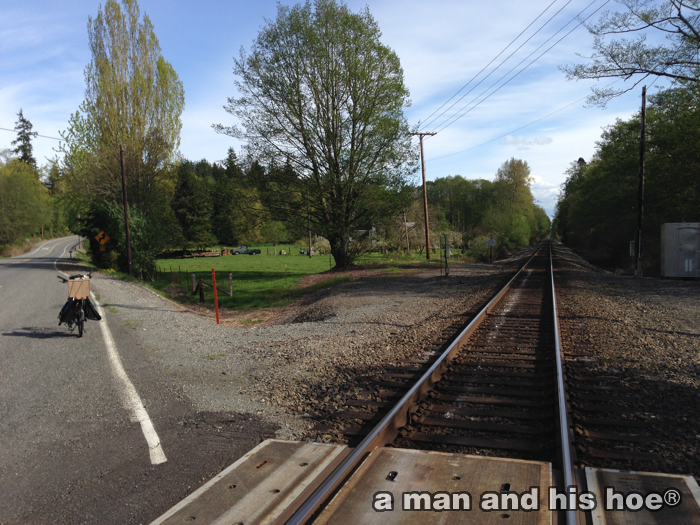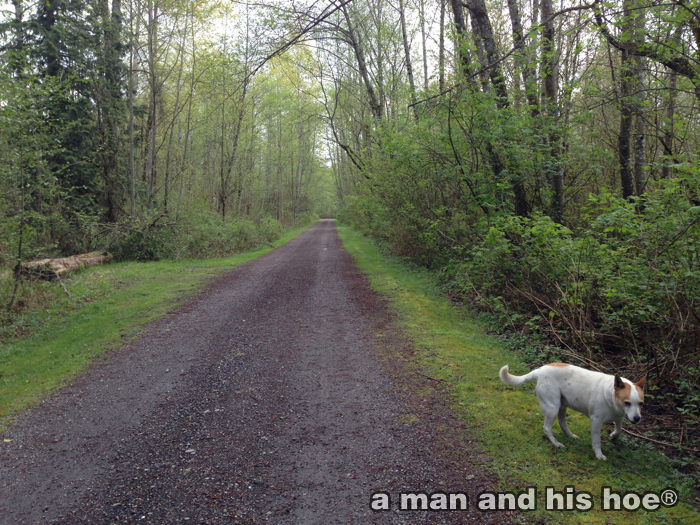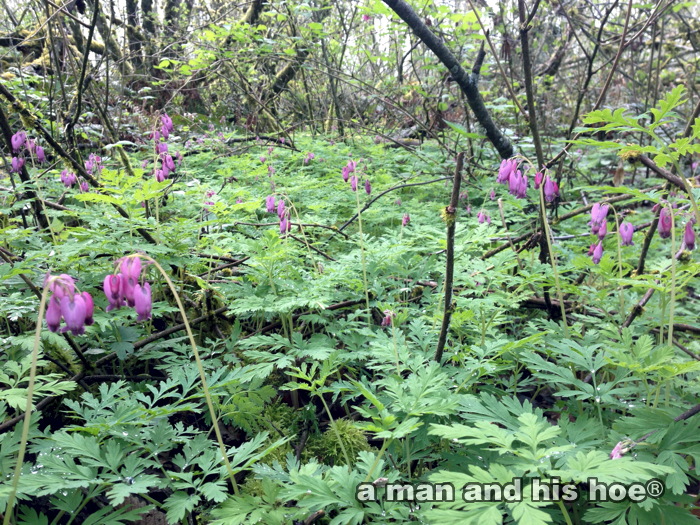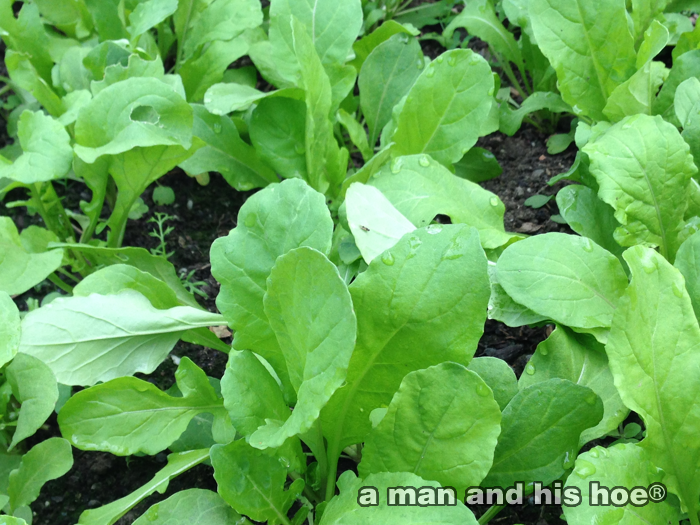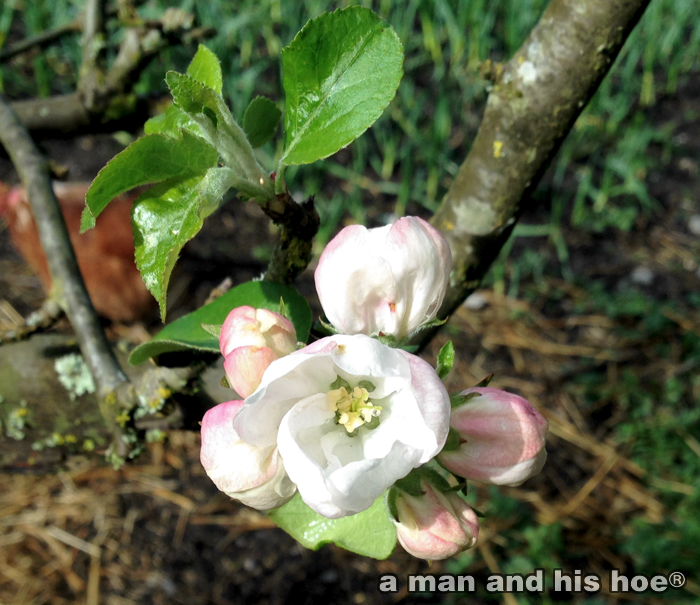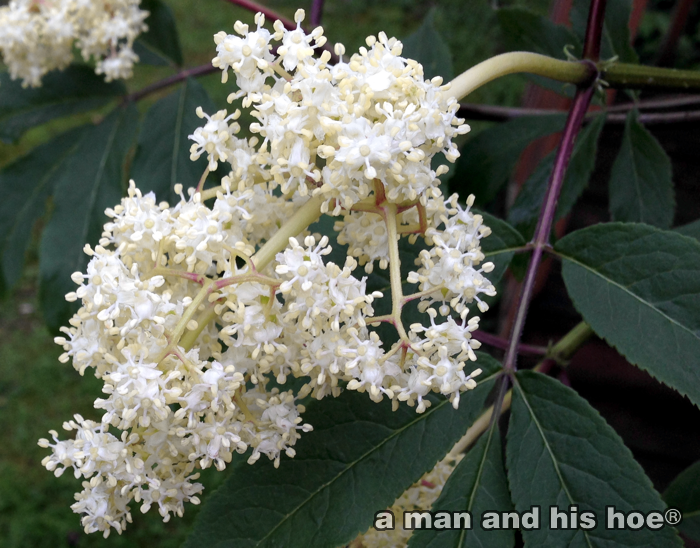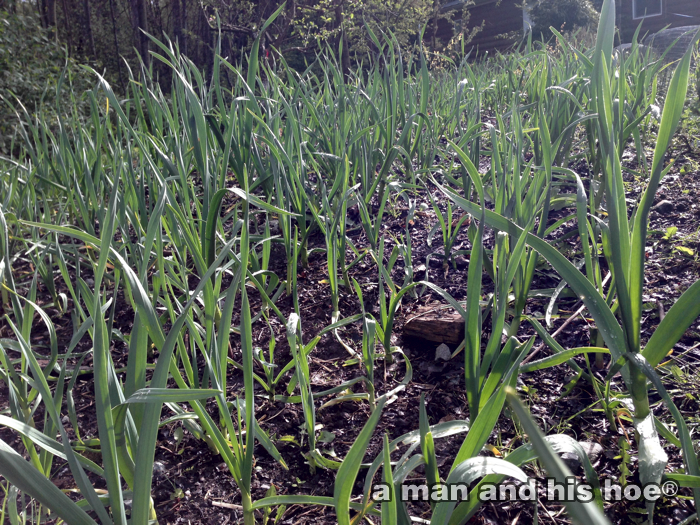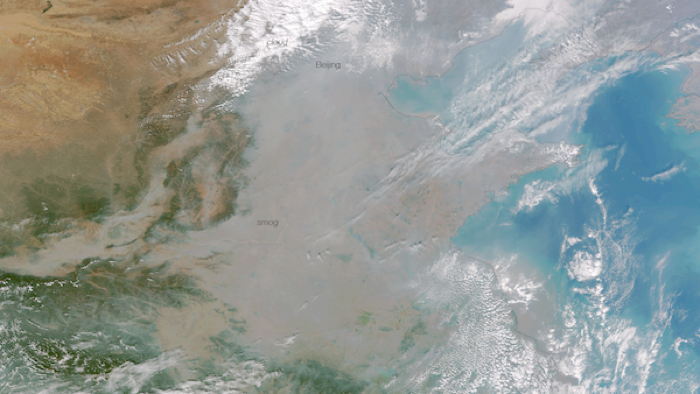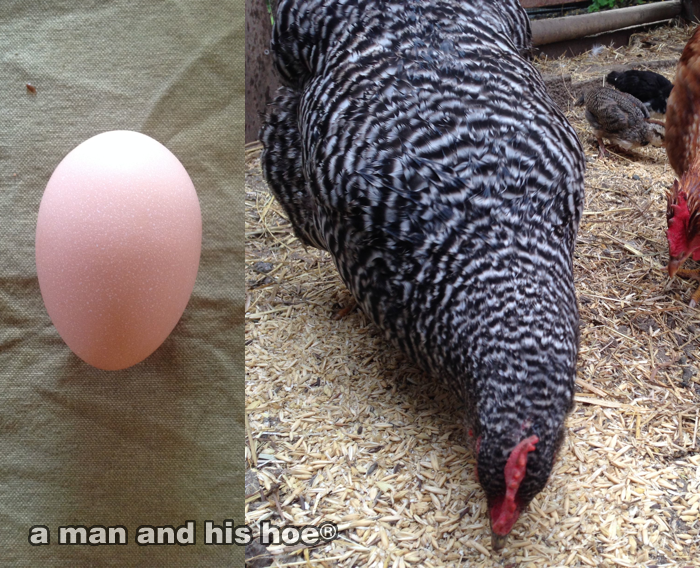These are the train tracks I pedal across nearly every day as I go fetch the mail, deliver eggs, and make other errands. And further down this page is the quiet driveway to a man and his hoe®, the forest floor blanketed with bleeding hearts, and a vegetable bed with fresh greens. Idyllic scenes far, far away from the heavily contaminated farmland of China, or so you would think.
But everyday, along those steel ribbons of railway, which just a few miles away, wind along the breathtaking Chuckanut Coast with stunning views of Guemes, Cypress, Orcas, and Lummi islands, trains more than a mile long haul coal, carved out of the ground in far away Wyoming. The trains take the coal to Vancouver, British Columbia, where it is loaded onto ships and taken across the Pacific Ocean to China. There it is burned in coal-fired power plants which billow out toxic clouds, which then poison the land which grows the garlic and fruit trees and many other crops which then get shipped to the US to be eaten by many of us.
And someday, all the CO2 emissions, burning that coal pours into the atmosphere, will warm the earth enough to cause the sea nearby to rise so much that these tracks will be under water. When that happens, there will no longer be any coal trains traveling through this idyllic countryside.
We know all these terrible things we are doing to the earth. But for some reason we can’t stop destroying the only home we have. We keep saying we can’t afford to stop our polluting ways, but when we read that nearly twenty percent of China’s farmland is now toxic, how can we justify such destruction? There is no economic activity worth destroying a fifth of a country’s farmland.
